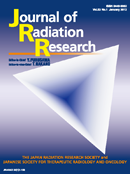Current issue
Displaying 1-22 of 22 articles from this issue
- |<
- <
- 1
- >
- >|
Biology
-
2012 Volume 53 Issue 3 Pages 343-352
Published: 2012
Released on J-STAGE: June 01, 2012
Advance online publication: May 11, 2012Download PDF (862K) -
2012 Volume 53 Issue 3 Pages 353-360
Published: 2012
Released on J-STAGE: June 01, 2012
Download PDF (475K) -
2012 Volume 53 Issue 3 Pages 361-367
Published: 2012
Released on J-STAGE: June 01, 2012
Download PDF (633K) -
2012 Volume 53 Issue 3 Pages 368-376
Published: 2012
Released on J-STAGE: June 01, 2012
Advance online publication: May 11, 2012Download PDF (1615K) -
2012 Volume 53 Issue 3 Pages 377-384
Published: 2012
Released on J-STAGE: June 01, 2012
Advance online publication: May 11, 2012Download PDF (384K) -
2012 Volume 53 Issue 3 Pages 385-394
Published: 2012
Released on J-STAGE: June 01, 2012
Download PDF (1215K) -
2012 Volume 53 Issue 3 Pages 395-403
Published: 2012
Released on J-STAGE: June 01, 2012
Advance online publication: May 11, 2012Download PDF (663K) -
2012 Volume 53 Issue 3 Pages 404-410
Published: 2012
Released on J-STAGE: June 01, 2012
Download PDF (589K) -
2012 Volume 53 Issue 3 Pages 411-421
Published: 2012
Released on J-STAGE: June 01, 2012
Download PDF (1204K)
Oncology
-
2012 Volume 53 Issue 3 Pages 422-432
Published: 2012
Released on J-STAGE: June 01, 2012
Advance online publication: April 06, 2012Download PDF (1578K) -
2012 Volume 53 Issue 3 Pages 433-438
Published: 2012
Released on J-STAGE: June 01, 2012
Advance online publication: May 11, 2012Download PDF (224K) -
2012 Volume 53 Issue 3 Pages 439-446
Published: 2012
Released on J-STAGE: June 01, 2012
Advance online publication: May 11, 2012Download PDF (559K) -
2012 Volume 53 Issue 3 Pages 447-453
Published: 2012
Released on J-STAGE: June 01, 2012
Download PDF (490K) -
2012 Volume 53 Issue 3 Pages 454-461
Published: 2012
Released on J-STAGE: June 01, 2012
Advance online publication: May 11, 2012Download PDF (791K) -
2012 Volume 53 Issue 3 Pages 462-468
Published: 2012
Released on J-STAGE: June 01, 2012
Advance online publication: May 11, 2012Download PDF (615K) -
2012 Volume 53 Issue 3 Pages 469-474
Published: 2012
Released on J-STAGE: June 01, 2012
Advance online publication: April 09, 2012Download PDF (382K)
Short Communication
-
2012 Volume 53 Issue 3 Pages 475-481
Published: 2012
Released on J-STAGE: June 01, 2012
Advance online publication: April 13, 2012Download PDF (1022K) -
2012 Volume 53 Issue 3 Pages 482-488
Published: 2012
Released on J-STAGE: June 01, 2012
Advance online publication: April 17, 2012Download PDF (335K) -
2012 Volume 53 Issue 3 Pages 489-491
Published: 2012
Released on J-STAGE: June 01, 2012
Advance online publication: May 11, 2012Download PDF (125K) -
2012 Volume 53 Issue 3 Pages 492-496
Published: 2012
Released on J-STAGE: June 01, 2012
Advance online publication: April 09, 2012Download PDF (335K) -
2012 Volume 53 Issue 3 Pages 497-503
Published: 2012
Released on J-STAGE: June 01, 2012
Download PDF (328K)
Miscellaneou
-
2012 Volume 53 Issue 3 Pages Cover03_1-Cover03_5
Published: 2012
Released on J-STAGE: June 01, 2012
Download PDF (191K)
- |<
- <
- 1
- >
- >|
